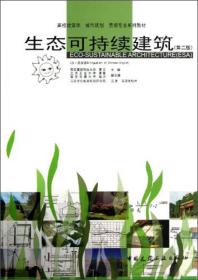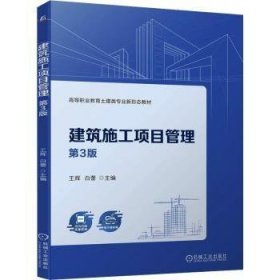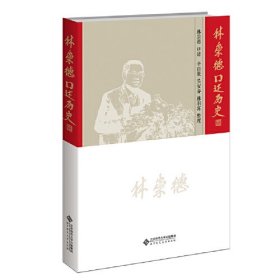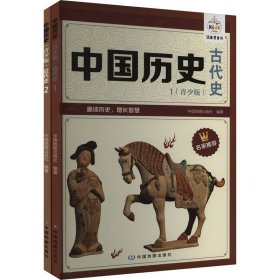
生态可持续建筑(第2版)/高校建筑学 城市规划 景观专业系列教材
全新正版未拆封
¥ 8.86 2.3折 ¥ 38 全新
库存2件
湖南长沙
认证卖家担保交易快速发货售后保障
作者夏云、夏葵、陈洋 编;王进 校
出版社中国建筑工业出版社
出版时间2013-09
版次2
装帧平装
上书时间2024-07-14
- 在售商品 暂无
- 平均发货时间 30小时
- 好评率 暂无
- 最新上架
商品详情
- 品相描述:全新
图书标准信息
- 作者 夏云、夏葵、陈洋 编;王进 校
- 出版社 中国建筑工业出版社
- 出版时间 2013-09
- 版次 2
- ISBN 9787112139965
- 定价 38.00元
- 装帧 平装
- 开本 16开
- 纸张 胶版纸
- 页数 207页
- 字数 99999千字
- 正文语种 简体中文,英语
- 丛书 高校建筑学城市规划景观专业系列教材
- 【内容简介】
-
《生态可持续建筑(第2版)/高校建筑学城市规划景观专业系列教材》是根据10年前的原书中文版本改写的,两大改进:一是采用汉一英双语;二是与时俱进进行了新陈代谢的改写,分10章:生态可持续发展的障碍;温故知今与创新;21世纪建筑何往;何谓生态可持续建筑;太阳能与沼气在建筑中的应用;增效资源;掩土建筑;建筑绿化;优化组合;生态可持续建筑的经济效益,对生态可持续建筑的理念、设计原理、方法、构造措施、材料选择进行了图文并茂的论证(述)。
《生态可持续建筑(第2版)/高校建筑学城市规划景观专业系列教材》适用于建筑学、城乡规划、景观园林、环境艺术、环境工程、土木工程等专业研究生及本科生的教材及相关设计、科研、管理及政策制定领域人员参考。 - 【目录】
-
1生态可持续发展的障碍
1BARRIERSOFECO-SUSTAINABLEDEVELOPMENT
1.1人口激增
1.1PopulationExplosion(PopulationBoom)
1.1.1膨胀的出生率
1.1.1Expandedbirthrate
1.1.2膨胀的需求
1.1.2Expandedneeds
1.1.3人类必须自控
1.1.3Humankindmustbeself-controlled
1.1.4变人口负担为人才资源
1.1.4Tomakepopulationfrombeingaloadtobeatalentresource
1.2自然灾害
1.2NaturalDisasters
1.2.1大自然灾害
1.2.1Seriousnaturaldisasters
1.2.2其他自然灾害
1.2.2Othernaturaldisasters
1.3人类负效行为
1.3HumanNegativeBehaviours
1.3.1人类的严重负效行为
1.3.1Man'sseriousnegativebehaviours
1.3.2其他人为危害
1.3.2Otherharmsbyman
2温故知今与创新——中国建筑回顾
2LOOKINGBACKTOTHEPASTTOUNDERSTANDTODAYANDCREATETHENEW-ReviewingtheChineseArchitecture
2.1乡土建筑
2.1VernacularArchitecture
2.1.1概况
2.1.1General
2.1.2乡土建筑的优点
2.1.2Advantagesofvernaculararchitecture
2.1.3乡土建筑的缺点
2.1.3Disadvantagesofvernaculararchitecture
2.2城市建筑
2.2UrbanArchitecture
2.2.1引言
2.2.1Introduction
2.2.2城市建筑优点
2.2.2Advantagesofurbanarchitecture
2.2.3城市建筑缺点
2.2.3Disadvantagesofurbanarchitecture
2.3新概念建筑
2.3NewConceptArchitecture
2.3.1引言
2.3.1Introduction
2.3.2能源危机引发了节能建筑与太阳房的研究与推广
2.3.2Energycrisisledtotheresearchandimplementationofenergysavingbuildingsandsolarbuildings
2.3.3绿色与土地危机引发了节能节地建筑
2.3.3Greenandlandcrisesledtoenergyandlandsavingbuildings
2.3.4生态可持续危机引发了生态可持续建筑
2.3.4Thecrisisofeco-sustainabilityledtoeco-sustainablearchitecture
321世纪建筑何往
3WHEREDOESARCHITECTUREGOINTHE21STCENTURY
3.1必然与偶然的反思
3.1LookingBackonNecessityandContingency
3.2建筑含义的延伸
3.2ExtendingtheMeaningofArchitecture
3.321世纪建筑前景
3.3OutlookofArchitecturein21stCentury
3.3.1上天——发展太空建筑
3.3.1Gointosky-todevelopspacearchitecture
3.3.2下海——发展海洋建筑
3.3.2Gointothesea-todevelopmarinearchitecture
3.3.3陆地建筑仍是主要方向
3.3.3Landarchitecture-stillthemaindirection
4何谓生态可持续建筑
4WHATDOESECO-SUSTAINABLEARCHITECTUREMEAN
4.1可持续性并不是新概念
4.1SustainabilityisnotaNewConcept
4.2非可持续建筑
4.2Non-sustainableArchitecture
4.3可持续建筑含义
4.3TheMeaningofSustainableArchitecture
5太阳能与沼气在建筑中的应用
5THEAPPLICATIONOFSOLARENERGYANDMETHANEINBUILDINGS
5.1太阳
5.1TheSun
5.1.1太阳基本情况
5.1.1Aboutthesun
5.1.2应用太阳能的10个“最”
5.1.2Theten"most"ofusingsolarenergy
5.1.3中国太阳能资源
5.1.3ThesolarenergyresourcesinChina
5.2建筑中应用太阳能
5.2ApplicationofSolarEnergyinBuildings
5.2.1太阳能热水与炊事
5.2.1solarhotwaterandcooking
5.2.2中国古代太阳能集热器
5.2.2TheancientChinesesolarcollectors
5.2.3多功能构件
5.2.3Multi-functionmembers
5.2.4太阳能采光与日照
5.2.4Daylightingandsunshine
5.2.5太阳能建筑
5.2.5Solarbuildings
5.3沼气
5.3MarshGas
5.3.1沼气基本知识
5.3.1Basicknowledgeofmarshgas
5.3.2沼气池构造及工作原理
5.3.2Constructionandoperatingprincipleofmethane-generatingpit
6增效资源
6INCREASINGRESOURCESEFFICIENCY(IRE)
6.1分析“F”
6.1Analyzing"F"
6.1.1从"F”看建筑体形与增效资源
6.1.1From"F"toUnderstandBuildingShapeandIRE
6.1.2太阳能建筑体形系数
6.1.2TheBuildingShapeCoefficient(BSC)ofsolarbuildings
6.1.3从"F"看建筑结构、构造与增效资源
6.1.3From"F"tounderstandbuildingstructure,constructionandIRE
6.1.4从“F”看建筑布置与增效资源
6.1.4From"F"tounderstandbuildinglayoutandIRE
6.1.5从"F"看城市形式与增效资源
6.1.5From"F"tounderstandcity'sformandIRE
6.2分析“R”
6.2Analyzing"R"
6.2.1实有热阻Rp
6.2.1PracticalenvelopethermalresistanceRp
6.2.2节能热阻RES
6.2.2EnergysavingthermalresistanceRES
6.2.3复合墙剖面设计
6.2.3Sectiondesignofcompositewall
6.2.4复合墙增热阻不增重或微增重
6.2.4ToincreaseCW'sthermalresistancewithoutaddinganyweightorslightlyincreasingweight
6.2.5旧墙体改造
6.2.5Toremodeloldwalls
6.3分析“Z”与“to”
6.3Analyzing"Z"and"to"
6.3.1科学安排“Z”
6.3.1Scientificallymanaging"Z"
6.3.2人能改变室外气温“to”吗?
6.3.2Cantheoutdoortemperature"to"bechangedmanually?
6.4分析“Q”与“SRHG”
6.4Analyzing"Q"and"SRHG"
6.4.1反射隔热
6.4.1Heatinsulationbyreflection
6.4.2通风
6.4.2Ventilation
6.4.3阻存
6.4.3Resistanceandstorage(RS)
6.4.4遮阳
6.4.4Sunshade
6.4.5绿化
6.4.5Landscaping
6.4.6自然空调
6.4.6Naturalairconditioning(NAC)
6.4.7多功能构件
6.4.7Multi-functionmembers
6.4.8多功能窗
6.4.8Multi-functionwindow
6.5本章小结
6.5Conclusionofthechapter
……
7掩土建筑
8建筑绿化
9优化组合
10生态可持续建筑的经济效益
主要参考文献
点击展开
点击收起
— 没有更多了 —












以下为对购买帮助不大的评价